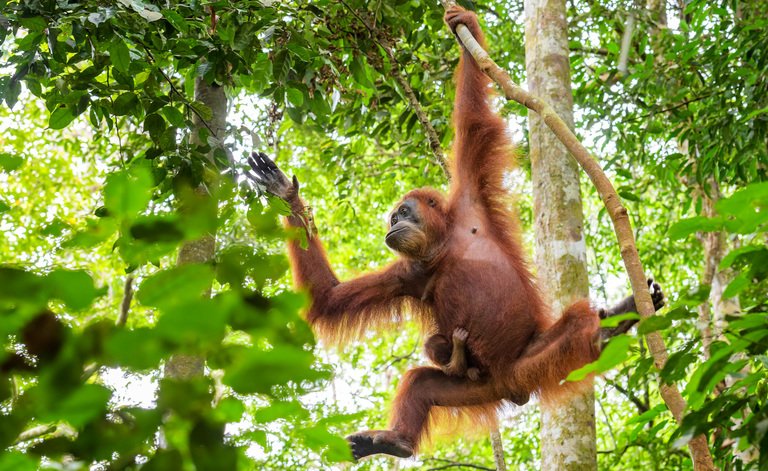The planet is currently facing a biodiversity crisis, with countless species at risk of extinction due to human activities and environmental changes. Threatened species—defined as those likely to become endangered in the foreseeable future—serve as vital indicators of ecosystem health and biodiversity. This article explores the factors contributing to the decline of threatened species, the importance of conservation efforts, and what we can do to help protect these vulnerable populations.
1. Defining Threatened Species
Threatened species are categorized into several classifications based on their risk of extinction:
- Vulnerable (VU): Species facing a high risk of extinction in the wild in the medium-term future.
- Endangered (EN): Species that are at a very high risk of extinction in the wild in the near future.
- Critically Endangered (CR): Species that are on the brink of extinction and facing an extremely high risk of extinction in the wild.
Organizations like the International Union for Conservation of Nature (IUCN) maintain the Red List, a comprehensive inventory of the global conservation status of species, helping to raise awareness and prioritize conservation efforts.
2. Major Threats to Species
Several key factors contribute to the decline of threatened species:
- Habitat Loss: Deforestation, urbanization, and agricultural expansion lead to the destruction and fragmentation of habitats, making it difficult for species to survive.
- Climate Change: Altered weather patterns, rising temperatures, and shifting ecosystems pose significant challenges for many species. Changes in food availability, breeding patterns, and migration routes can threaten their survival.
- Pollution: Chemicals, plastics, and waste can contaminate habitats and harm wildlife. Pollutants can disrupt reproductive systems, reduce reproductive success, and lead to population declines.
- Overexploitation: Unsustainable hunting, fishing, and trade in wildlife can deplete populations faster than they can recover. This is particularly critical for species with low reproductive rates.
- Invasive Species: Non-native species can outcompete, prey on, or introduce diseases to native species, leading to declines in local populations.
3. The Importance of Conserving Threatened Species
Conserving threatened species is essential for several reasons:
- Ecosystem Health: Every species plays a role in its ecosystem, contributing to balance and biodiversity. The loss of one species can have cascading effects on others, leading to ecosystem collapse.
- Cultural Significance: Many cultures have deep connections to specific species, which play a crucial role in their heritage, traditions, and economies.
- Scientific Value: Biodiversity offers vast potential for scientific research and discovery, including medical advancements, ecological studies, and insights into evolution.
- Climate Resilience: Diverse ecosystems are more resilient to environmental changes, helping to mitigate the impacts of climate change and maintain ecosystem services like pollination and water purification.
4. Conservation Efforts
Efforts to conserve threatened species vary in approach but share common goals:
- Protected Areas: Establishing national parks, wildlife reserves, and marine protected areas provides safe havens for species and helps preserve critical habitats.
- Captive Breeding Programs: Breeding threatened species in controlled environments can help increase population numbers and genetic diversity, allowing for eventual reintroduction into the wild.
- Legislation and Policy: International agreements, such as the Convention on International Trade in Endangered Species (CITES), regulate trade and protect threatened species. National laws can also safeguard habitats and restrict harmful practices.
- Community Engagement: Involving local communities in conservation efforts fosters stewardship and encourages sustainable practices. Education and awareness campaigns can help people understand the importance of protecting threatened species.
5. What You Can Do
Individual actions can contribute to the conservation of threatened species:
- Support Conservation Organizations: Contributing to or volunteering with organizations dedicated to wildlife conservation can help fund and implement vital projects.
- Reduce Your Carbon Footprint: Addressing climate change by reducing energy consumption, using public transport, and supporting renewable energy can help protect species affected by climate shifts.
- Advocate for Wildlife Protection: Contacting policymakers, participating in campaigns, and raising awareness can influence legislation and support conservation initiatives.
- Educate Yourself and Others: Learning about local threatened species and sharing this knowledge can inspire action and foster a culture of conservation in your community.
Conclusion
The plight of threatened species is a pressing issue that demands immediate attention and action. By understanding the challenges they face and the importance of their conservation, we can work together to protect these vulnerable populations. Through collective efforts at local, national, and global levels, we have the power to make a difference, ensuring that future generations can enjoy the rich biodiversity of our planet. Every species counts, and together, we can help create a more sustainable future for all.

